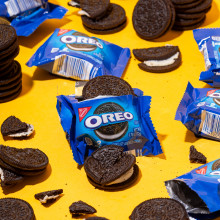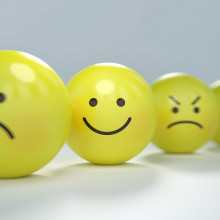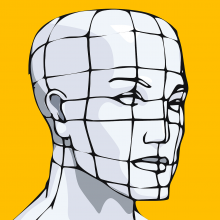From skateboarding bulldogs to drumming gorillas, modern advertising is teeming with wacky characters and far-fetched fantasies, often with little relation to the product actually being promoted. But why? If you have found yourself wondering how mad marketing in all its forms actually works to get us to buy things, join us as we take a look at the science supporting the strategies of the world’s biggest brands. We’ll be talking to marketing experts to uncover what makes a successful campaign, and the techniques agencies use to test the tautness of our heart strings while viewing their ads. We’ll also take time to consider, as we progress further into the current digital epoch, how advertising has become an increasingly invasive influence on our lives. What are the future implications for the likes of you, me, and the valuable virtual real estate on our device screens?
In this episode

01:31 - Uptick in cases of hepatitis in children
Uptick in cases of hepatitis in children
Will Irving, University of Nottingham
In recent months, over a hundred young children - under 5 - across the UK have been admitted to hospital with signs of liver damage. This is called hepatitis. Thankfully most have recovered but some have been life threatening. But, so far, investigators have drawn a blank regarding the cause, although there is speculation that a new infection could be responsible, or it might be a knock-on effect of some of the public health measures used to control Covid-19. Will Irving is a clinical virologist at the University of Nottingham; Chris Smith asked him how this came to light in the first place…
Will - It was first picked up in Scotland where public health authorities noticed that they were receiving an increased number of reports of young children with severe liver damage. Then, the UK health security agency put out an alert and a number of other cases were identified right across the UK. I think, at the moment, we're around about 110 cases. Following the UK raising an alert with the world health organisation, cases have been reported in quite a few countries in Europe, America, and in Japan.
Chris - And this all started when?
Will - The first alarm was raised about three weeks ago, but the cases that we're counting are from the 1st of January this year. To see 110 cases of young children with jaundice in a period of four months is extraordinary. It's a really unusual event. To add to the problem is that we don't know what the cause is.
Chris - So, how are they investigating it, then?
Will - All of these children will have a number of investigations. They're usually ill enough to be in hospital, so samples are taken. There are a standard set of viruses which are known to cause hepatitis, but the tests for all of those viruses in all of these children have been negative. An alternative possibility is that there is some kind of toxin these children are being exposed to. That is being investigated. But, at the moment, none of the usual suspects have turned out to be the cause.
Chris - Have those investigating ruled out Covid as a possibility? Because that seems to be responsible for, and capable of, causing pretty much everything as far as I can tell over the last two years.
Will - Well, in terms of direct link, of those hundred odd children in the UK, a small percentage at the time that they presented with their severe illness were infected with SARS-CoV-2 but it's less than a fifth. It doesn't appear that an immediate Covid infection is resulting in the hepatitis. That is not to say that the pandemic and SARS-CoV-2 the virus are not in some way related to this outbreak. It would be quite a coincidence, I think, to imagine that this outbreak happened just at the end of two years worth of pandemic that has nothing to do with it.
Chris - So what do you think that relationship could be then?
Will - It's possible that these children have been infected with SARS-CoV-2 before they became ill and that, in some way, has altered the ability of their immune response to deal with the normal childhood virus infections they would usually be exposed to. Then, you have the huge behavioural change across the entire population we've undergone because of the COVID pandemic. We've been isolating, and there's no doubt that over the last two years the circulation of viruses which are normally very common in the community has been reduced. Last August in the UK, we removed most of the precautions that society was taking, which means that, during the last winter, these children who mostly are between three years and six years old have come out into the community, having had two years worth of isolation, and that maybe in some way they've been exposed this winter to a whole range of different viruses, and that may have caused their immune system to react in some peculiar way, which has resulted in liver damage.
Chris - Presumably we've got samples from these children, or at least a proportion of them, and those will be being tested. So, are there any things coming up in those tests that might point towards what viral causes there are?
Will - There is one lead: that many of these children have been shown to be infected with an adenovirus. Adenoviruses are very common childhood infections. There are many different types of adenovirus, but about three quarters of the children where it's been looked for have been found to be positive for an adenovirus. Now, that's interesting and clearly we can't ignore that, but it has to be said that adenoviruses in otherwise healthy children are not known as a cause of hepatitis. We know viruses mutate over time and that can sometimes alter their behaviour, so there are laboratories that are busy looking at the genetic sequence of these adenoviruses to see if there's anything peculiar. But, at the moment we don't know which is the correct explanation.
Chris - And are the kids okay? I mean, are they recovering?
Will - Yes. Most of the children are spending some time in hospital, being supported and then their liver is recovering. The liver has a very great capacity to recover. And then they're going home. There have been around 10 children where the liver damage has been so great that they've needed a liver transplant. I'm not sure about within the UK, but I think there have been, one or two deaths reported from other countries. So it is potentially serious, but 90% of these children are recovering and going home.

08:19 - Robot beats all animals for highest jump
Robot beats all animals for highest jump
Elliot Hawkes, UC Santa Barbara
A record-breaking robot that can jump over a house and generate G forces 30 times greater than a fighter pilot would feel, is the brainchild of engineer Elliot Hawkes. As scientists are turning their attention back to the Moon, with trips there planned for the near future, machines capable of this sort of giant leap could become very attractive as a way of getting about. Harry Lewis heard how nature was the inspiration for the new robot…
Elliot - In animals, you're limited by basically the work your muscle can do in a single stroke. If you imagine you're lifting a weight with your arm or something, the energy you can produce is basically the one contraction of your bicep; and that's it. If you're a flea, fleas jump by storing energy in a spring and then rapidly releasing it, so the upper bound of their jump height is set by the energy they can produce in one stroke. The best jumper out there is a galago, a bush baby is another name for it. It's got long legs and a long tail. Its real secret is that it has more jumping muscle per body mass than really any other creature.
Harry - How on earth Elliot does the bush baby link to robotics?
Elliot - In robotics, we have this thing called 'bio-inspired design biomimicry', where we often look at animals and say, "Okay. Well, this is how animals have evolved to do it. It's probably a pretty good solution for our problem. Maybe we should build something kind of like that." What we found here though, is that there's some pretty fundamental differences between a jumping animal and a jumping robot. They don't have to use a motor that's like a muscle in that you only get this one contraction. What this means is you're not limited to that single stroke, like the muscle of the animal is, you can basically produce as much energy as you want and store it into a spring for a single jump. Your limit is no longer your muscle, for an engineered jumper it's really the spring.
Harry - You've applied this knowledge to a natural prototype.
Elliot - Yeah, exactly. In animals that spring is a very small percent of their body mass. That's because it should all be muscle. You want to maximize your muscle; you don't need much spring. Because you just can't store that much energy, you don't need much spring. We can store tons of energy for a robot. What we did is we made the motor as small as possible, because they can just keep winding for a long time if you have plenty of time between jumps. If you're constrained in your time between jumps, then you need a bigger motor. But we were saying, 'how high can you jump with all the time in the world?' We put on a tiny, tiny motor and then made the robot all spring. Relative to body mass, it has about 100x more spring mass than an animal. The key to performance is how much energy you can store in that spring per unit mass of the spring, so a lot of the work went into how can we optimize this spring?
Harry - And what was the result? How high can your robot jump?
Elliot - The animal jumps 2.25 metres and ours jumps 32.9 metres. I should mention the thing is only 30 centimetres tall. It takes off 30 meters per second. It goes from 0 metres per second when it's crouched and ready to jump to 30 metres per second and it does that in 9 milliseconds. If you start doing some of the calculations there, you can think about the acceleration that this little thing is going through; it's something like 315G's.
Harry - Can we compare that to something?
Elliot - Yeah. A fighter pilot experiences around 8G and that's about the limits of what a human can withstand before they pass out.
Harry - I take it this is the most impressive jump made by a robot today. Is it?
Elliot - I mean, you never know, but we believe it is the highest jump ever by anything in the history of the world. Which is kind of a fun thing to think about.
Harry - That's awesome. That's so good. Okay so take the fun out of it and let me ask the million dollar university funding question. Why?
Elliot - We've been working with NASA on this project and it turns out the moon is an incredibly benign place to jump because gravity is about 1/6 what it is on earth and it has almost no atmosphere. It turns out on the moon, you could jump about 125 metres high while jumping forward half of a kilometre in a single jump. One of the applications that we've discussed with NASA is actually jumping down into craters. They have steep sides and they're rocky and the jumping robot could just hop down into there, collect potentially a little sample, and hop back out.

13:15 - Study suggests 7 hours of sleep is best
Study suggests 7 hours of sleep is best
Dr Christelle Langley, University of Cambridge
We all know how good it feels to get a decent night's sleep, and now, a new research study published this week in Nature Ageing thinks it has found the sweet spot for the optimal number of hours individuals in mid-to-late lifeshould be getting. Dr Christelle Langley, one of the authors on this paper, from the University of Cambridge joins Julia Ravey to explain the findings…
Christelle - Our study showed that 7 hours of sleep was the optimal duration in a large cohort of middle to later aged individuals, for cognition, mental health and wellbeing. But it's not only the duration of sleep that it's important, but also the consistency of optimal sleep matters. Fluctuations in sleep duration over time were also associated with poorer cognitive and mental health outcomes. We identified some of the key brain regions also associated with sleep duration and these included the hippocampus, which is well known for its role in learning and memory, and also areas of frontal cortex, which are involved in the top down control of emotion.
Julia - Wow. So sleep is very important. I mean, I always think 'how do you study sleep?' Because you can't very well be standing over lots of people and watching them and monitoring them as they sleep. What methods did you employ to come to these conclusions?
Christelle - This particular study was a collaboration between researchers at the University of Cambridge and Fudan University. We used existing data from the UK biobank, which is a large scale database of approximately 500,000 individuals. This database includes questionnaires, measures of sleep duration, measures of cognition including things like processing speed, memory and executive function, and it also includes questionnaires of mental health symptoms, including depression and anxiety. We examined whether sleep duration was associated with any of these measures, and we specifically used something called nonlinear models to investigate these associations. Essentially this allowed us to determine the optimal duration of sleep where either more or less would have a negative impact on cognition and mental health.
Julia - So on average individuals who get less than 7 hours sleep a night, what relationships did you see there with these people?
Christelle - We did use these nonlinear models, which allowed us to specifically test how many hours of sleep cognition and mental health were best. We showed that both too little and too much sleep was associated with poor cognitive performance. The relationship may suggest that non-optimal sleep may be a risk factor for cognitive decline in aging and this is supported by reports where insufficient or excessive sleep was associated with an increased risk of developing dementia. We can't say for sure, why too little sleep has a negative impact on cognition, but it's possible that it may be due to the disruption of slow wave sleep, which has been shown to be important for memory consolidation and reduced sleep may also have a negative consequence on the clearance of toxins and this is also a really important component of sleep.
Julia - And very briefly, for some individuals, it may be the case that they just can't get to sleep and it's quite frustrating sometimes to hear "you must get 7 hours". Based on your results, have you got one tip to someone who is struggling to sleep?
Christelle - Some of the recent technologies suggest that using apps or sleeping diaries to monitor sleeping behavior is a really good idea.

17:20 - Teens respond less to Mum's voice
Teens respond less to Mum's voice
Dan Abrams, Stanford University
As the parents of Harry Enfield’s character “Kevin” knew only too well, when you talk to a teenager, sometimes it can feel like your words are going in one ear and out the other. And as a teenager yourself, you may have felt like interacting with someone else was infinitely cooler than listening to your parents. Now a study published this week in the Journal of Neuroscience suggests that this selective tuning-out may actually be biological. Julia Ravey heard how from Stanford’s Dan Abrams…
Dan - We brought in a cohort of 13 to 16 year olds, and we brought in their moms, and we recorded their mom saying these very brief nonsense words:
Test audio clip - Key-butt-eye-schult.
Dan - And then we had their brain activity measured using FMRI when they heard both their mother's voice:
Test audio clip - Key-butt-eye-schult.
Dan - And unfamiliar female voices saying the exact same thing. But the mother said:
Test audio clip - Key-butt-eye-schult.
Dan - And, in contrast to what we saw with the younger kids, in adolescents we saw the exact opposite response, which is a greater reward response in response to unfamiliar voices compared to mother's voice. We saw this kind of switch.
Julia - Was that what you expected to see compared to the younger children?
Dan - I wish I could say that I saw this coming. Sometimes science works like this, where you stumble onto a really cool result. We think it's evolutionarily adaptive. We think that kids, at some point, need to build their own life, build their own social network, and make their own social world. And we think that the biological process needs to occur by which kids are required to leave their family and their immediate caregivers.
Julia - After learning about Dan's work, I had to get a first-hand assessment of my own teenage ears from none other than my mum, Shell: When I was a teenager, did I ignore you?
Michelle - Honestly, I can't think of a time that you did ignore me, to be honest. Maybe at the age of three you started to want to go your own way, you were more interested in other people then, really. You used to have a pram and you used to face me and used to have your head on a swivel to see everyone going past. But I wouldn't say you actually ignored us. I think you were a very good teenager, to be honest.
Julia - Did you feel like what you were saying, I wasn't listening to you?
Michelle - I feel that more now, really. You're in planet Julia, aren't you?
Julia - Well, yeah, this is very true, but I was going to apologise if you felt like that. But then I was gonna say, "It's biology." So, I apologise for biology.
Michelle - Don't be blaming biology. Wasn't that a song by - what was it - Little Mix?
Julia - Girls Aloud.
Julia - While we debate Noughtie's pop groups, it seems I've always ignored my parents. But for those living with teens now and who are struggling with this, and for teenagers themselves who are being told off for not taking in every word their parents say, I asked Dan if he had any tips based on his findings of how to handle this communication mismatch.
Dan - I think an important message is that it's easy to malign adolescents for not listening to their parents or for tuning out their parents. And, I think as adults, we can all look back on that and say, "Well, I wasn't entirely trying to block my parents out. I was just living my life and focusing on my friends." Adolescents tune into these new social partners, but it's not personal. This is just where their mind is going and this is just what their brain is doing. Parents should know that this is a natural part of adolescent development.
Julia - When we think about our own behaviour, and what dictates what we do, when we think about listening to someone, we think about the words and the instruction, not necessarily the voice itself. I think it's really interesting that your study has shown it's not the words, or the instruction, or even the emotion, it's just who's speaking.
Dan - Yeah. I think it's easy to take voices for granted: they're everywhere. We argue that voices are among the most pleasurable stimuli that we have in our everyday lives. They help people feel connected and part of a group and part of a family. It speaks to how important it is to hear each other and to connect with each other in natural ways that are without our devices and without texting and all the like.

21:55 - Video calls create creativity crash
Video calls create creativity crash
Melanie Brucks, Columbia University
“Hold on, I just need to let the dog out and start the washing machine!” Believe it or not, a civil servant manning a government helpline said that to someone they were helping recently as a reason for needing to interrupt the telephone call. While working from home has had its benefits, some businesses are beginning to question the hidden costs, including lost productivity and, potentially, creativity. A new study, published in Nature, seems to be singing from the same song sheet. Columbia University’s Melanie Brucks compared how well people came up with work-related ideas at either in-person meetings or virtual ones. She told James Tytko what she found. He was eager to hear, first, how she could assign a value to the creative output of the people they studied…
Melanie - We independently assessed these ideas by giving the ideas to outside judges who weren't part of the study. And we asked them to rate each idea on novelty and the other metric is value or appropriateness. So, we can assign a numerical value to each of these ideas.
James - And this is obviously very topical research because people have been using video calling for work since the pandemic hit, and it looks like it's here to stay, at least in part, as we move into life after the virus. And it's also a bit extra topical at the minute here in the UK after Jacob Rees-Mogg, who's a senior government minister, started visiting the offices of his civil servants unannounced in a bid to encourage staff to start working in the office more frequently. Does your research suggest he's got a point?
Melanie - There's a lot of things to consider here. What we're finding is a cognitive cost to interacting virtually. So, people generate fewer ideas and fewer creative ideas when they're engaging in video interaction compared to when they're in the same physical space. I think it's valuable to be in person. That being said, there's lots of value to virtual work, and I would not say that this work suggests that we need to always be in person and there's no reason to do remote work as well.
James - So, it's not unequivocally worse to be working virtually, but did your research lead you to theorise as to why you got the results you did and why that creative spark comes from being in the same physical space as others?
Melanie - We realised that there's a really big difference in shared environment: actually the physicality of how we're interacting. In virtual interaction, the only shared environment you really have is the screen, and this is particularly true now that people blur out their backgrounds. We thought that this shared environment might compel people to look more at the screen, almost be tethered to that screen, because anytime you look away, you're disengaging from the interaction. And so that's what we found: we actually extracted eye gaze and we were able to look at where they were looking - Are they looking at their partner? Are they looking at the surrounding room? People look at their partner almost twice as much when they're interacting virtually, and this explains the negative effect on idea generation because, when you're more visually focused, you're more cognitively focused. When you're tethered to this screen and you're filtering out all of your environment, that actually affects your ability to cognitively wander as well.
James - We're conducting this call over zoom. What are the implications, I suppose, from your study for radio shows like ours?
Melanie - So first I'll say this is also the value of having virtual communication, that you can speak to people all across the country. That's not something that we should drop just because there might be some negative consequences to interacting virtually. But, what my recommendation would be if you need to interact on a video call, is to do actually exactly what we're doing right now, which is to turn the video off because that will untether you to that screen. Now, you're able to visually wander your environment again, and that's going to lead to more cognitive wandering as well.

26:15 - Opening Oreos with perfect precision
Opening Oreos with perfect precision
Crystal Owens, MIT & Gareth McKinley, MIT
Sandwich biscuits are a tasty sweet treat that we often like to indulge in at the Naked Scientists office, and it seems everyone has their own way of eating them. Recently a team at the Massachusetts Institute of Technology has created a device, called an ‘Oreometer’, that can perfectly remove the top layer from an Oreo biscuit for those of that persuasion. And since this just so happens to be our own Otis Kingsman’s preferred method of eating an Oreo, we had him speak to Crystal Owens and Gareth McKinley from the team who made it…
Otis - How do you like your sandwich biscuits? For me, I like to try and snap off the top to get to that individual crunchy layer. But when I do, the biscuit always crumbles. Fortunately Crystal Owens and Gareth McKinley from the Massachusetts Institute of Technology have invented a device which can do the job perfectly.
Crystal - What we found in the lab is that a twisting motion is the best for getting a very clean break of the cream from a wafer. We actually designed a little Oreometer, which is a 3D printed device that you can stick a cookie in. It will provide this twisting motion to an Oreo that's held very carefully by rubber bands.
Otis - So in order to get the top off, twisting is for best motion, as it's all based in the science of rheology.
Gareth - Rheology is the study of the flow of matter. One of the things that rheologists are very careful to do is to define how they twist or pull on things. You need to make sure that you either make things slide, or make things stretch in a certain way. A standard test that we always use is called a 'shearing test'. The goal is to generate a sliding motion of your Oreo biscuit against your Oreo cream. What you find is that the weakest part is actually at the interface between the white cream and the dark biscuit.
Otis - It works by the cream filling being similar to both a solid and liquid state of matter, or as they put it, 'mushy'.
Gareth - Many of our materials are what we would call 'viscoelastic'. That means that they have some viscous properties and some elastic or solid-like properties. The cream in particular is an example of a material that looks solid and is solid if you don't push on it very hard, but when you push on it harder, it will actually flow like a liquid. We say that these materials have a 'yield stress'. What does that mean? It means they're solid below that stress, but when you push on them hard enough, they will flow like a liquid. The combination is that we would describe this material as indeed 'mushy'.
Otis - From their analysis of the Oreo cream, they were able to design the machine around its properties to remove the top layer perfectly.
Crystal - The Oreo cream is much stronger than it is sticky. It tends to just come off from one wafer. If you have the perfect twisting motion on a freshly open pack of Oreos, you will get one wafer that is just bare with maybe like a little tiny bit of cream, and then one wafer that has all the cream.
Otis - These results may seem pretty insignificant at first, but there are actually a few wider applications for it.
Gareth - People like things that don't taste too gritty or don't taste too sticky or don't taste too slimy. Rheology is the science that really allows us to put some numbers to those things, and allows us to control for them. That's really important, particularly as people start to formulate low fat foods or artificial meats. Getting that texture and getting the properties right is an extremely important part of the consumer experience.
Crystal - Even though we published a full study, we haven't even begun to answer all of the questions someone could ask about Oreos. We have freely distributed the design files for someone to make their own Oreometer, to do other tests, maybe with Oreos at different temperatures or with different brands of sandwich cookies.
Otis - That's right. Those with a 3D printer can achieve this level of superi-oreo-ity and aid in the development of oreo-logy. I, however, I'm going to stick to my hands on method.

31:09 - Introduction to the Psychology of Advertising
Introduction to the Psychology of Advertising
Leslie Hallam, University of Lancaster
What leads us to buy something? From TV to online and sides of busses, adverts are everywhere. We can block out most ads from registering, but there are those few that have the power to tear us away from scrolling social media, which is full of yet more ads. This sent James Tytko down a rabbit hole of trying to understand how they're so powerful...
James - Like everyone, I'm frustrated by ads. They're not just on TV anymore of course they're on social media, news websites, everywhere. At the same time, I'm also fascinated by them. The fact that they are everywhere and increasingly so suggests to me that their effectiveness at this point is unquestionable. During the most recent World Cup, ITV were charging somewhere between £400,000 to £500,000 for 30 second ads during England's semi-final against Croatia. Who could be spending this much money without a guarantee of some sort of return on that investment? I also know that the ads I do see, well they're often bonkers. What does a talking meerkat from Russia have to do with making me more likely to use a certain price comparison website? With all this in mind I wanted to find out what I could about advertising from a scientific standpoint. Why they are the way they are, how we are being influenced by them, and who or what dictates which ads we see. My first port of call was Leslie Hallam, who runs the Psychology and Marketing course at the University of Lancaster.
Leslie - For all of us, we have a kind of orienting response, which is more or less alerted when we are looking at ads. In some cases we pay attention and we realise it's not anything to do with those. Sometimes we continue to pay attention despite the fact that it's not to do with us, if we're not in the target market at all for the product. Other times, it's just a really striking ad and it gets your attention and keeps you there. It's a kind of very basic hard wiring that's being played to form a memory. Tracing our long term memory store, which is the goal of any advertising, but if you're not aware of it, you can't pay attention. If you're not paying attention, you don't remember it. If you don't remember it, you simply have no change in your propensity to purchase when you come across that product. Think where perhaps it parts look little bit from the narrow path that is peer reviewed in journals and, sensible psychology is when it comes to things like emotionality and the impact it has on decision making and how we measure emotionality in advertising, is quite a controversial area.
James - You've touched nicely there on the tricky territory we are in; how we can use science to explain emotion. I guess I'm looking for your advice really as to whether I'm wasting my time, trying to look for scientific explanations, to the questions I have about modern advertising and how emotion and creativity gets us to buy things.
Leslie - I don't think there's any doubt in anybody's mind that having an emotional response to an ad is a very powerful method of engaging people with your brand, with your product and if you create a positive emotion, then that emotion is recreated when you see the brand again in supermarket or the car showroom or wherever. That energy, that emotionality, becomes part of the thing we associate with the brand or the product. You simply experience the emotion. You don't really go into it and think, 'I really believe that there is this warm feeling associated with it' because really what they're trying to do in advertising all the time is reach into your subconscious rather than your consciousness. Subconscious is a very fuzzy area within psychology within science. It's such a powerful element within what advertisements are trying to do here. I'm not suggesting anything to do with dreams or weird spooky stuff or collecting conscious. I'm not saying they're not there, but they're not scientific. They're a different way of looking at the world, but clearly scientists use the concept of subconscious as well. Subconscious in this sense is the preconceptual realm and it's very emotional, it's very appetitive, it's divirous, it's a very uncritical response and a bit unconstrained. Advertisers try to reach into that so overall the emotions prefigure our decision making and that's why it's such a powerful arena for advertisers to try and access.

36:22 - Can you test how an ad will perform?
Can you test how an ad will perform?
Vera Sidlova, Kantar
How advertisers access the subconscious part of our brains is largely to do with making us respond emotionally. There are businesses out there that can put metrics to these mannerisms. One of these ad testing agencies is UK based Kantar. Their clients come to them, looking for help at all stages of the development of their marketing campaigns and they're trying to use methods based on science to assess how an ad may perform. Vera Sidlova, Kantar creative director explained a few of the tools in their arsenal to James Tytko before testing it on Julia Ravey...
Vera - We use a tool called 'link AI', which is a survey based tool. We have a set of questions that measure the strength of association between the ad and the brands. We measure how much you enjoy watching the ad, whether it stood out of the crowd, whether it would really capture attention. We also capture how it changes your opinion and predisposition towards the brand. But in addition to asking survey questions, we also use a neuroscientific method called facial coding, which is a software that we use using your webcams. We ask you if you'd agree to be facial coded and if you say yes, then using your webcam we monitor your face while you're watching the ad. We're not actually watching your video physically, the machine just records the movement of the smallest muscles on your face to decode whether you're frowning, or smiling, or maybe experiencing a little bit of disgust, or confusion, or maybe a bit of a smirk. It does that analysis second by second, as you watch the ad. It is a combination of that neuroscientific method and your answers to survey questions that we use to determine quantitatively how an ad is doing.
James - How do your clients usually act on your analysis? I presume they come to you looking for data driven reassurance; that their campaigns are going to be successful. How do you convince them or reassure them that what they're going to put out there will be received well?
Vera - We have metrics that are validated to sales. Our clients know that if an ad scores high in link, it is going to deliver on ROI.
James - How do you convince them of that?
Vera - We've done studies to show that ads that have scored high on link then had higher responses in sales. We've got some big metadata to show and to prove that. But in terms of a single ad we'd be looking at, we have the strengths of the database, we've got the validation work, but then usually what we do is we look at the data together and we're trying to figure out the why behind that data. For example, we could have an ad that we see isn't resonating with people as much as the client had hoped. It's not doing terribly, but it's not doing great either and so the conversation would be, "what can we do between now and airing to make the ad more enjoyable?" If the ad was, for example, supposed to be enjoyable because of a funny joke, we would study using facial coding, whether the joke was actually being received, whether all groups found it funny, whether there's a comprehension problem.
James - Does it tell you things different from what you can get from the survey? Is it offering alternative data?
Vera - Yes. Our faces often show things that we ourselves are unconscious of. What the survey gives you is what the respondent themselves remembers and is also willing to disclose in a survey. But what the face tells you is a very second by second view of how they felt at a particular second of watching the ad and those might be things they aren't even conscious of themselves.
James - Vera sent me a demo of the software they use at Kantar to record the micro-expressions which help them analyse ads. I wanted someone who knew next to nothing about what the software was looking for to run the test and I also knew I wanted someone who I thought might produce some fairly emotive responses to get some detailed results. This left just one candidate.
Julia - James has sent me a link to an ad testing service I've been presented with the 'Coca-Cola' Christmas advert, an advert for 'Plenty', which is kitchen roll. My camera's just come on - loading the emotion detector. Welcome. We are about to play a video for you. The graph below will plot your engagement with the video over time using various metrics. Coca-Cola Christmas.
[Coca-Cola Christmas advert plays]
Julia - So cute. Oh, I'm crying. Oh my God. I'm crying. I hadn't seen that before. Oh no. It was a dad who was trekking across to give Santa a note from his daughter. The letter just says, Santa, I want my daddy over Christmas. Well that emotion was off the charts. My valence, which I'm guessing is my engagement, I was really engaged with that other, so that to me was a very emotional one. Okay. Next video. I can't imagine I'm gonna be emotionally engaged with kitchen rolls, but you never know.
[Plenty kitchen towel advert plays]
Julia - Ooh. Are you joking me? That one was really funny. It was essentially a Christmas day and everything was going wrong. There was a cat that pooped on the floor. There was a baby who was sick all over someone. In every instance where there was a mess, the kitchen roll was there to clean it up. Yeah. My disgust was pretty high, but I was extremely expressive. My expressiveness was on the ceiling throughout all of it because I think I was laughing. Right. Well, I'll pass back over to James now to learn a bit more.
James - Wow. If I'm honest, that went pretty much as expected. Julia's emotional engagement broke the scale with those two ads, but it's not just obvious expressions, which the software can detect.
Vera - They could have frowned a little bit when a certain element appeared or that could have showed disgust maybe when there was a food shot. There are a lot of things that happened in the course of even a 30 second ad that your brain would never be able to recall because you wouldn't be conscious of even making that small muscle movement on your face.
James - I want to pick your brain a bit and ask your opinion on what you see as the role of science in this industry in what you do?
Vera - I personally see the role of science as helping us understand consumers and the people who are consuming our advertising. I think advertising is part art and part science. We've got the great creativity that agencies bring, but how it's going to land and what effect it's going to have is something we may not know initially. That is why research is important, both at the individual advertising piece level, but also broader. How are people perceiving advertising? How does their brain work when they watch content in general? What makes them smile? What makes them laugh? What are they sensitive to? I really think there is a big role for science to play in this and to really help all of us understand just what makes us tick, because I think it's no secret that none of us watch TV to watch advertising. We don't go on our phones to watch a digital banner; it has to do its work. It has to capture our attention. It has to tell us something that's meaningful to us and the 'how' of that and 'how we do that' is quite a mystery and research can help unveil that.

44:31 - Advertising: The Scientific Artform?
Advertising: The Scientific Artform?
Orlando Wood, System1
Orlando Wood, chief innovation officer of market research company System1 and honorary fellow of The Institute of Practitioners in Advertising might be the person to answer that question. There are such a range of ads out there from cinematic spectacles to annoying popups. James Tytko started by asking him what separates the best advertising from the rest...
Orlando - The advertising we're talking about has to do a few things: it has to capture people's attention, it has to be interesting and entertaining, and it has to lodge things in your memory so that brand comes to mind first before any other. That sort of brand building advertising has to capture our - what I describe as - broad beam attention. And that means, usually, advertising that involves the living, it involves characters, perhaps the use of music, the use of humour. All of these things are of interest to, as some psychologists would describe it, the right hemisphere of the brain; the half of the brain that presents the world to us.
James - I'm really interested on the way you characterize the right brain there. Can you go a bit deeper on that maybe, and especially how it's distinguished from perhaps the left hemisphere of the brain.
Orlando - All my work here rests on the brilliant research of a philosopher/psychiatrist/neuroscientist called Iain McGilchrist, who talks about the two hemispheres of the brain and describes not that they do different things, but more that they do things differently; they have different takes on the world. The right brain, as he describes it, presents the world to us with this kind of broad and vigilant attention for the left hemisphere then to look at more closely, bring a narrow beam attention to look at the detail, to manipulate what we see, to control it, to make use of it, if you like. According to Iain McGilchrist, the right hemisphere is open to contradiction, open to novelty, It can see that two opposing thoughts could be true at the same time which means it understands metaphor, it understands humour, and it understands and appreciates music in a way that the left hemisphere feels is very difficult. It can't really do that so well. It has other ways of looking at things: it likes to categorise, break things down into smaller parts. What I describe in my work, looking at advertising styles and how they've changed actually in the last 15-20 years, is that, as in culture I believe, things have moved to a very left brain dominant view: more literal, more transactional, more rigid, really. And advertising has become very mechanistic: you see words on the screen, very rhythmic soundtracks, you don't see lived time. You don't see dialogue, you don't hear music so much. You don't see characters like you used to, jingles disappeared a long time ago. And it's to do with these habits of thinking, I believe, and how culture has shifted towards a more left brain dominant view.
James - Can you tell me a bit about what advertising was before whatever inciting incident it might have been?
Orlando - It all started in the late 50's and early 60's with people like Bill Bernbach, DDB, in New York...
James - Bill Bernbach, pioneer of the creative revolution in advertising in the 1950s and '60s, famously said, 'Advertising is fundamentally persuasion and persuasion happens to be not a science, but an art.' Before Bernbach, advertising was formulaic. It wasn't particularly eye catching, it wasn't provocative; it was safe. That all changed thanks to Bill Bernbach and DDB.
Orlando - Listeners might remember some of the VW ads: the 'Think Small' campaign. And of course, in the States, where everything was about thinking big, they dared to say think small and they put a little Beetle up in the top left hand corner.
James - Through the unification of concept, colour and language, DDB were able to turn the VW Beetle, a small, ugly and to its particular detriment in post-war America, German car, into a cultural icon. Its size and the way it looked became part of its appeal, its attractiveness. This was reflected in the advertisements in magazines: the small image of the Beetle, in black and white, is dwarfed by the blankness of the rest of the page it occupies. Teenagers were ripping the ad out of the publications it was printed in and pinning it up on bedroom walls.
Orlando - Because, Bill Bernbach, he believed in a kind of humanity over pomposity. He believed that things should be done differently, that nobody's perfect and nobody's going to believe you if you claim to be, which I think set the tone and tone of voice for many campaigns in the following years. And it worked very well.
James - And how do we get back to that style of advertising, that boldness?
Orlando - I work for a company called System1 that tests advertising, emotional response to advertising, and gives advertisers a sense of how successful it's going to be because emotion orientates our attention, puts things into long term memory, and helps to create the kind of advertising that people actually enjoy watching rather than this mechanistic rather brutal stuff which people tend to want to avoid. We test emotional response to advertising, we help people to create better work. We help. And that is one way in which we can get to great work, of course, in the way that we measure it. There is a kind of advertising which has become particularly widespread, I'd say, in the last 15 years or so with our ability to target people. And that's today known as performance or activation advertising, sometimes called response advertising. That really seeks to nudge people towards a particular brand that people might be interested in in the buying moment. So, I may well be in the market for a sofa right now and get an ad which very product centric in which may lead me towards that website or downloading that app or whatever else. That's a different style of advertising actually and the work I've done in this area suggests that the two different types work quite differently and that the kinds of effects that advertisers are likely to see are going to be quite different too.

51:14 - The Problem with Programmatic
The Problem with Programmatic
Jeff Chester, Center for Digital Democracy
Digital ads are set to exceed 60% of global ad spend in 2022. Our habits and behaviours are shifting away from our TVs, and towards devices constantly connected to the internet, creating opportunities for companies to use our data to personalise ads in ways never seen before. This is called programmatic advertising, and I spoke with Jeff Chester from the Center for Digital Democracy in Washington DC, to find out how this form of advertising works and what it means for our future relationships with the companies trying to sell us things...
Jeff - What people in the advertising business realised around 2009/2010, that the same super fast computers used to buy and sell shares of stocks on stock exchanges, that were able to make decisions in milliseconds and compile huge amounts of data, could also be deployed to buy and sell people to deliver targeted ads, and that the online environment was the perfect place to allow this very powerful set of technologies and could be used to deliver the exact ad to the person based on all the information an advertiser had access to. Initially, everybody was put up for auction, advertisers would bid to place an ad in front of you, James, because you fit the right demographics, they knew that you had bought the product previously, or you were a suitable target. Over time it's evolved, so, in addition to buying and selling people, which is really what programmatic advertising is about, the data driven process based on your profile, based on all the analysis that they're able to do in real time. What's key here is that this system of data surveillance follows you from site to site, application, to application and device to device. And it's able, increasingly now, to use machine learning and artificial intelligence to make far ranging predictions about how you will behave. So, for example, if you're not responding to the ad for the breakfast cereal in the right way, that they hope that you will do, they can change the message.
James - The direction of travel here is digital ads are now accounting for over half of all the ads we see, and that's just gonna go up. And of course, there are a lot of people I know who are worried about the potential implications of their data being in the hands of technology companies, but then there are other people who say, "So, I'm getting shown ads that are targeted to what I'm interested in." We've covered over the course of the show so far that this might mean that we're starting to see less creative and emotionally engaging ads, but what would you say to people who might initially quite like the idea of targeted advertising when they first hear it?
Jeff - What does this mean for our democratic futures when a handful of powerful companies and ultimately political groups are able to gain almost second by second access to whatever you do. It's not just what you do online because online is now integrated with our so-called offline experience. For example, when you go into the grocery store supermarket and you use a loyalty card, that's also connected to your online profile. They know everything about you. What we've already seen with programmatic advertising is unprecedented manipulation in our political process, from Cambridge Analytica to Brexit, to Russian disinformation in the US presidential campaign; the list goes on. Programmatic advertising is playing a role, undermining democracies, hurting consumers, and can do much more because, right now, there really are, certainly in the United States, no limits to how programmatic advertising can operate.
James - Jeff, you work for an organisation called the CDD, the Center for Digital Democracy. What is that?
Jeff - CDD was basically set up to ensure that the growth of the internet would evolve in ways that would reflect democratic values and the public interest. From the very beginning of the commercial internet era, around 1993/94, which is when we started our work here in Washington DC, we understood that advertising and the data collected for targeted advertising was the DNA of the internet, and that commercial imperatives would shape how the internet evolved. So, we started examining it and investigating what was going on with the internet. We're actually responsible for the only US online privacy war there is, which unfortunately just covers children, and it was tough for us to get that through. But we have been investigating how Facebook, Google and Amazon have operated from the very beginning. And we try to sound the alarm and get regulators to look at it.
James - Let's talk about some of the implications of this sort of data harvesting on a grand scale. And we've spoken, I suppose, quite broadly about it, but maybe we can talk more about how a specific demographic of people might have been affected and the CDD's report into big food, big data, and the child obesity crisis. Can you tell me a bit about that?
Jeff - The food and beverage companies have been at the forefront of online advertising, really since the beginning of the commercial internet in the 1990s. Fast food companies are using all their data resources to target young people and other vulnerable groups to buy their products, regardless of the health consequences. So, whether it's the cereal box that triggers an interactive game on your mobile phone, or you're seeing the brand on billboards as you play the video game, the big food and beverage companies are using the most powerful data tools to target you and children to buy what are basically products that could kill you. We need to have stronger rules limiting how they can collect data and how they can use it. It's by no means an easy feat. The ads are being tested using the latest techniques to peer into our minds to figure out implant these messages within our kind of emotional brains. And I wish I was making this up because it sounds science fiction.
James - We had someone as part of our show get the test, run on them, the facial mapping software, this is right on topic.
Jeff - Generating advertising based on these predictions about our interests, our likes, our vulnerabilities, and making sure that ads surround us wherever we go. We have to have some rules that regulate how these ads in the 21st century are constructed because, increasingly, they're personalised, it's an ad that follows us and gets to learn about us in order, frankly, to shape our behaviour and reactions.
Julia - Jeff Chester from the Center for Digital Democracy, with some important reminders of how serious it is that companies are allowed to store and use information about us.
James - Absolutely. And Jeff mentioned to me that he felt that the UK was actually at the forefront of holding big tech to account, thanks to measures like the online safety bill, but it's a conversation we need to keep having and keep reviewing, given the rapidly changing nature of the digital landscape.
Julia - Definitely agree.
James - Since researching this topic, I've become fixated by adbreaks, by the way, even the naff ones. It's one of those where I really want to look away and just can't because I want to know what emotion they're trying to get me to feel, or I'm getting a particular promotion for this brand of soap or that kind of deodorant.
Julia - Maybe big tech are trying to tell you something, James?
James - Maybe. Sorry, in advance, to anyone else who I've opened this can of worms for.
Related Content
- Previous The Great Awoke-ning
- Next Why doesn't our own snoring wake us up?










Comments
Add a comment